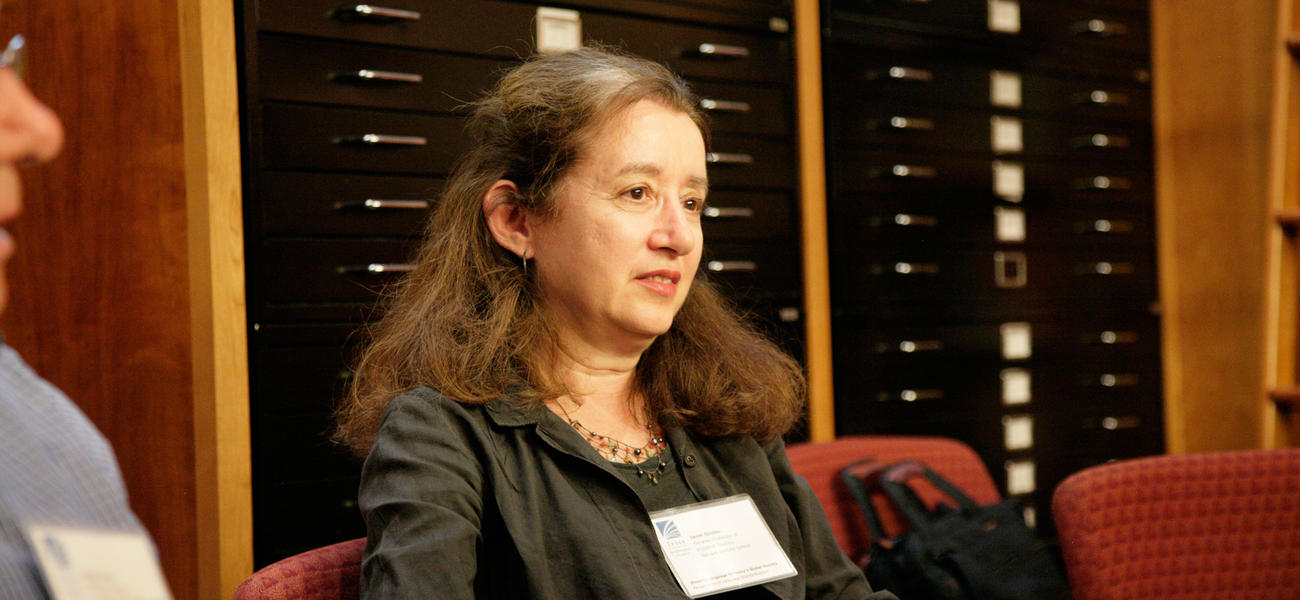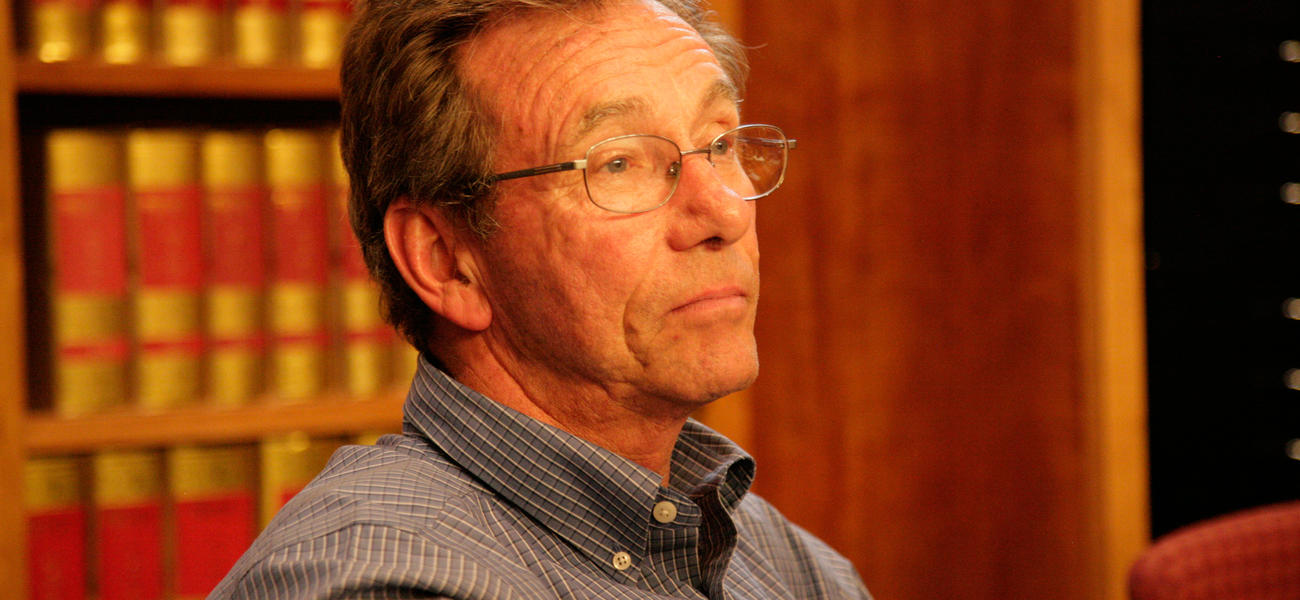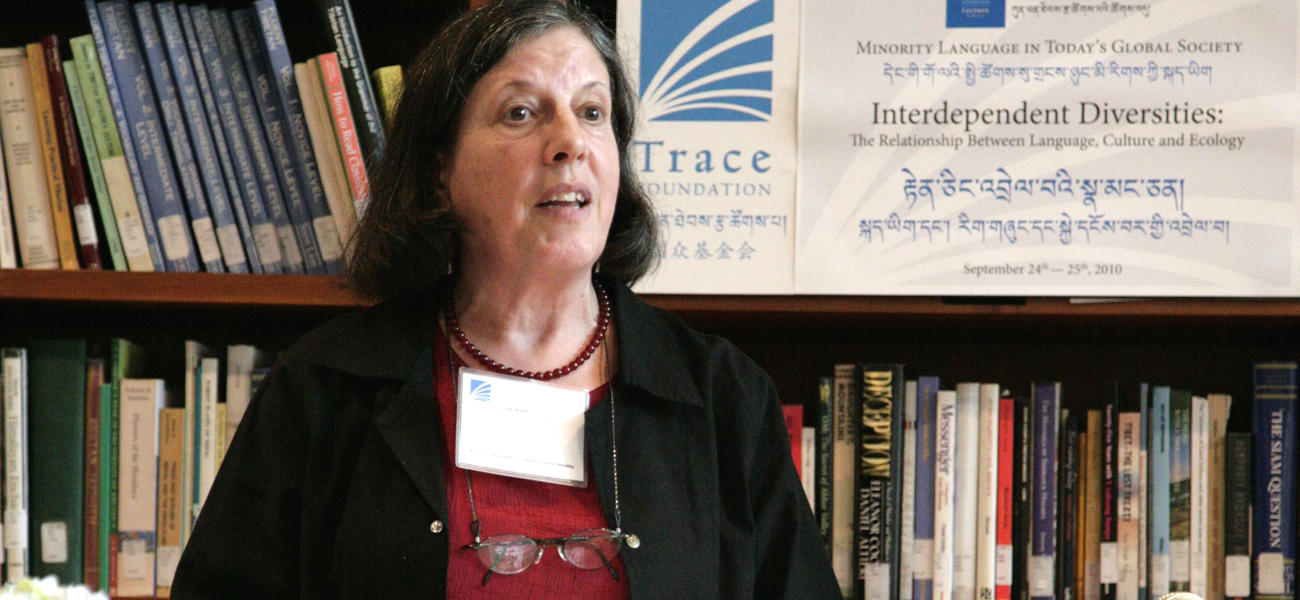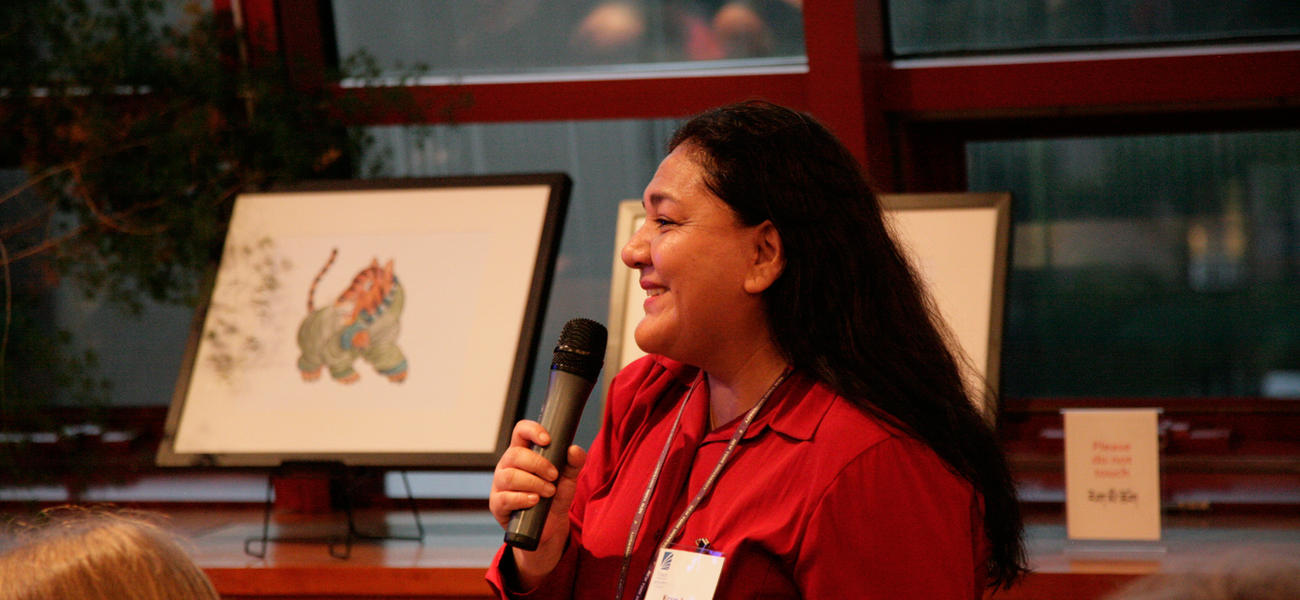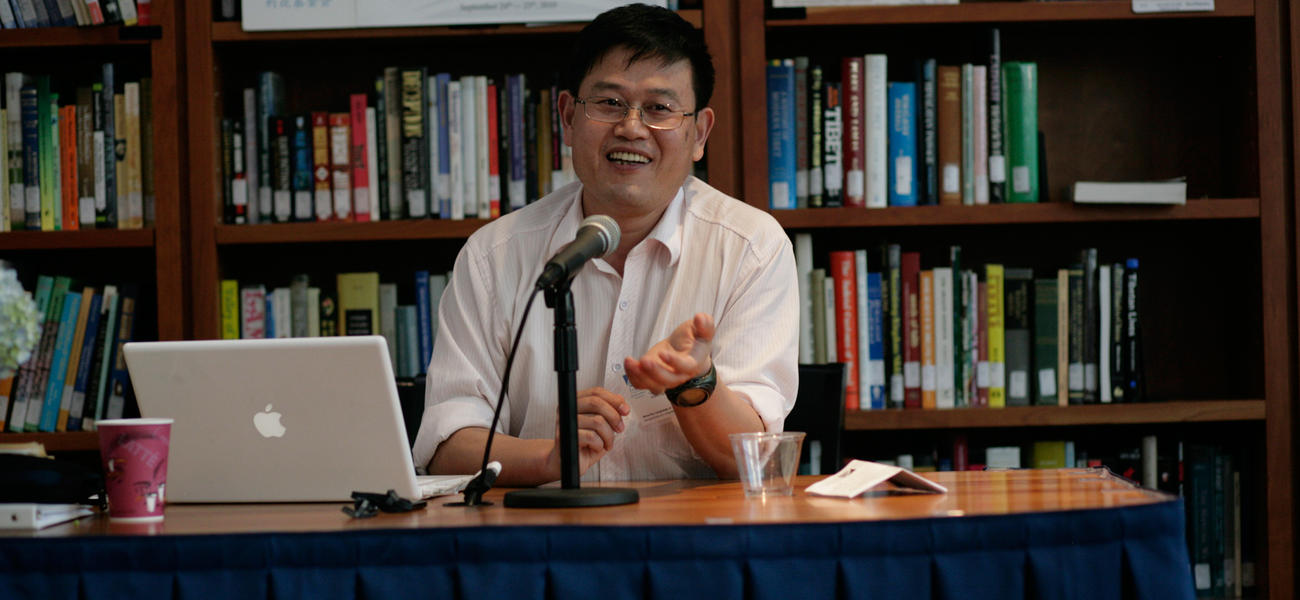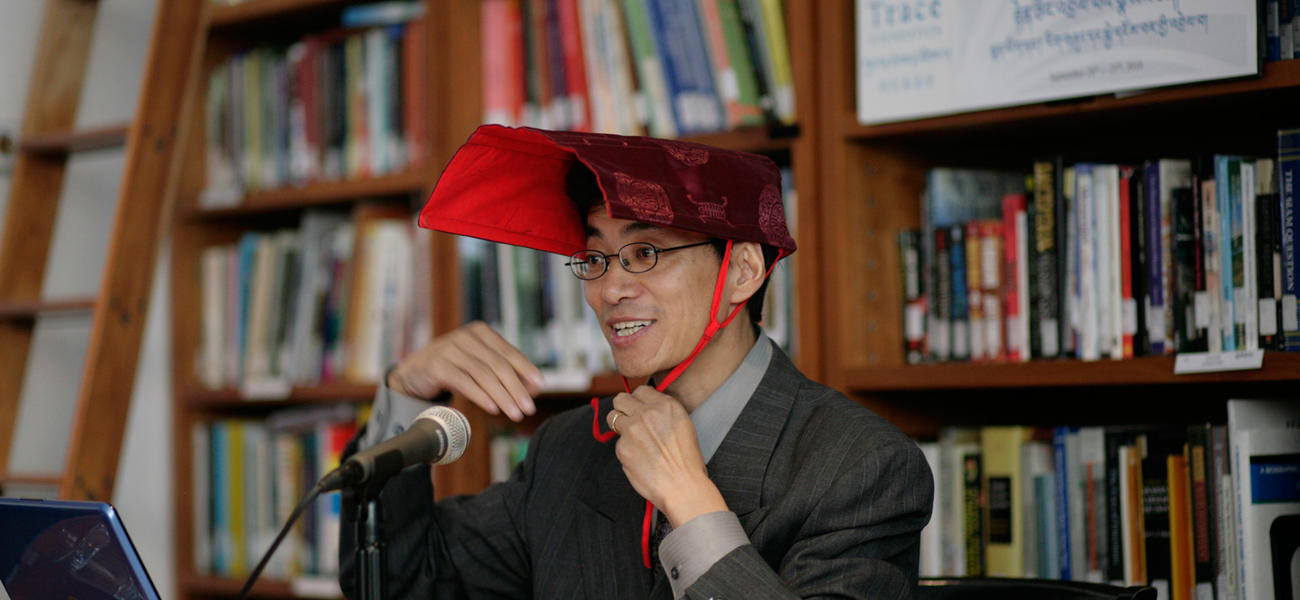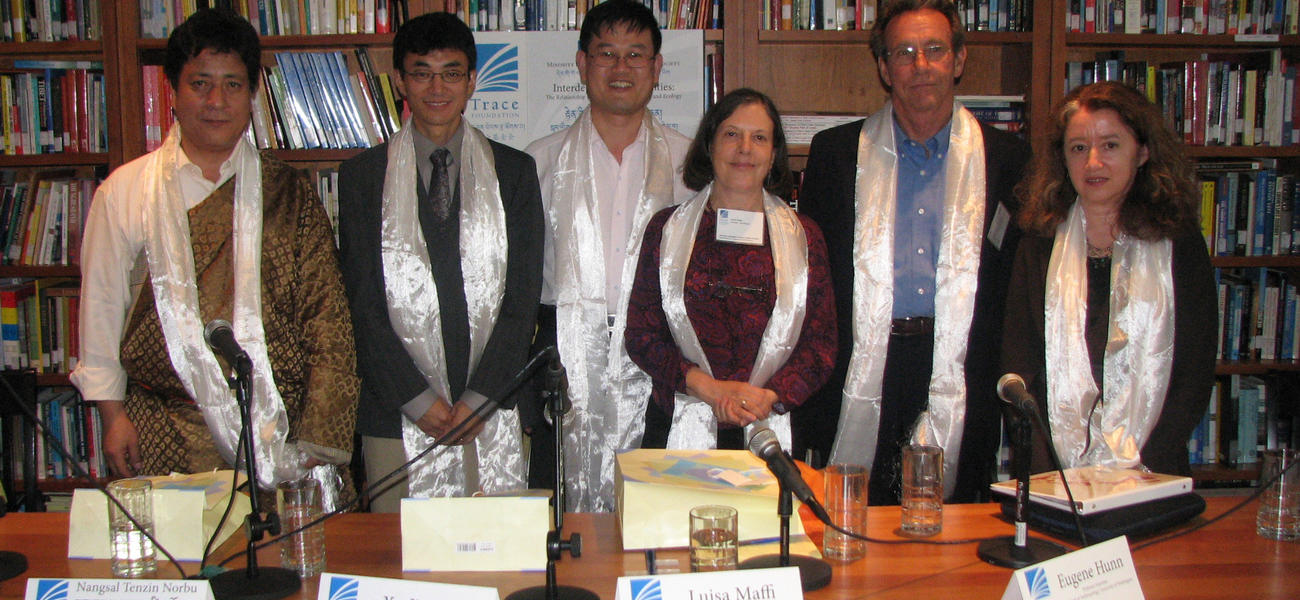On September 24 and 25 Trace Foundation held the fifth event its first lecture series, Minority Language in Today’s Global Society. The two-day conference, entitled Interdependent Diversities: The Relationship between Language, Culture & Ecology explored the connection between linguistic diversity and biodiversity on the Tibetan plateau and around the world.
Trace Foundation outdid itself last month in tackling some of the most important—and tricky—issues facing Tibetans today. Cultural identity and tradition, at the heart of the discussions during the Interdependent Diversities conference, are often seen as the last hope to forestall the disappearance of the Tibetan world. The conference focused upon the intrinsic value of diversity, especially the relation between linguistic diversity and that of both human culture and biological culture. The assumption for all of the participants was that, surely, diversity is a good thing. But, as the discussion proceeded, it also became clear that there might be different ways to think about diversity and identity and tradition—and that some of those ways might turn out to be at odds with other goods that are needed for the continued flourishing of Tibetan languages, cultures, and biospheres.
The presence of several experts who are entirely outside of Tibetan studies was of great benefit. They played the very welcome role of drawing attention to other groups around the world whose languages, cultures, and biospheres are threatened. What can Tibetans learn by considering other examples? The first speaker was Dr. Luisa Maffi, cofounder and director of Terralingua, an organization that is devoted to promoting the biological and cultural diversity of the “web of life.” Dr. Maffi pointed to research that ties the recent reduction of linguistic diversity in a given region to the equally dramatic reduction of the diversity of plants and animals in the same area. The connection between language and the natural environment has to do with local, traditional expertise in caring for life in a region. Such ability to care and protect is intimately connected with having the linguistic resources to name and understand those plants, animals, and their habits.
Dr. Maffi’s talk was underscored the next morning by the impressive body of research by Eugene Hunn, Professor Emeritus from the University of Washington’s anthropology department. Professor Hunn expanded the argument for protecting the world’s cultural and linguistic diversity. He pointed to the intrinsic virtue in supporting alternative ways of living on the earth, which allows us all to have a richer understanding of the capacities of human nature. Professor Hunn surveyed his experience among the Tseltal, the Zapotec and other Mid-Columbian Indians, and the Huna Tlingit in Northwest America. He pointed to the elaborate vocabulary among the Tseltal for bees, wasps, and their nests, which shows far more specificity than what is known to modern zoology. Again, he fascinated the audience with the astonishing knowledge of a young girl he worked with in central Mexico, who was able to identify hundreds of distinct medical plants in her region by name.
While we are taken with this argument for the ecological value in preserving local language and culture, questions remain. What about cases where traditional practices turn out not to be the most effective, or are even mistaken or damaging? What about conflicting notions between different cultural groups regarding what elements in the environment should be favored over other elements? At such points, other standards are going to have to be invoked, since if two traditions are at odds with each other, we cannot say that tradition as such is always right. In particular, if assumptions about what constitutes the best way of life are not shared between groups, the argument that local knowledge is intrinsically valuable might be a hard sell.
The perfect and salient example of who may not be convinced of the value of local tradition is the Chinese state. The third speaker at the conference was Xu Jianchu, senior scientist and regional coordinator at the World Agroforestry Centre, and currently Professor at the Kunming Institute of Botany and executive director of the Center for Biodiversity and Indigenous Knowledge. Professor Xu’s work focuses on the conservation of biodiversity in Yunnan province in Southwest China, an area that includes major Tibetan cultural precincts. Professor Xu turned the conference’s attention to Tibetan agricultural calendars and spoke of the special dangers to the Tibetan plateau, source of all of Asia’s major rivers, due to global warming. Professor Xu, like the speakers before him, showed respect for the local worldviews and conceptions of the sacred among Tibetan peoples. But he also intimated the delicate political climate and the likely need for compromise. For example, there has been a recent effort on the part of the state to get Tibetan nomads to dramatically reduce the size of their herds. Here Professor Xu pointed to some animal husbandry practices of Tibetan herders that are detrimental to the environment.
Professor Xu’s remarks also served to raise the question of how much influence academics and scientists really have on governmental policy. While Professor Xu lauded the value of broad consultation with local actors before new policies are instituted, large scale and compulsory changes are taking place at this moment in the Tibetan nomad regions in question. It is not likely that many of the ideals to which Professor Xu alluded are actually being respected. Professor Xu is well aware of political realities, however. As the conference participants contemplated the current jeopardy to Tibetan ways of life, a comment made by Eugene Hunn earlier in the conference, regarding the “treaty tribes” among Native Americans, became very significant. Those native tribes who, in the 19th century, were forced into unfair agreements with the United States government, and were compelled to relinquish large portions of their ancestral lands, are now in a better position in the twenty-first century—in contrast to other native American tribes who never signed such treaties—to negotiate with the American government and win new privileges. The very treaties that spelled the end of their traditional way of life are now valuable political tools. They are a legal basis upon which to have a place and rights in the American justice system. The point for Tibetan groups, to which Professor Xu heartily agreed, is that it is necessary to work within the Chinese political system rather than opposing it unconditionally.
This point about the political also relates to another helpful distinction made by Professor Hunn. This turned out to be relevant to the final two papers given at the conference, both by Tibetan scholars. Professor Hunn distinguished between an “heirloom tradition” (which is handed down and valued simply because it is old) and a “working tradition” (wherein adjustments can be made that are salutary in the present). Again, the emphasis is on the political, the strategic, and the future. Keeping this distinction in mind might help us to work through the nostalgia and genuine longing for the riches of the Tibetan language reviewed by Professor Nangsal Tenzin Norbu, instructor of modern Tibetan language at Columbia University. Professor Norbu pointed to the increasing number of loan words in Tibetan, especially those that describe the objects of modern technology. He lamented the loss of the colorful and historically resonant terms that are being left behind. The ensuing discussion recalled the similar predicament of other languages—indeed, virtually all languages—including some successful moves to revitalize old languages, like Hebrew, in the twenntieth century. But there is also another issue. We can start to see that the urge to preserve might sometimes work against the vitality of a language. We might start to worry that were we to get too good at remaining true to the “heirloom” language, our language might not be able to “work” for the everyday lives of people in the twenty-first century.
It might be that the real question is whether the Tibetan language—even with its loanwords and neologisms—is being used at all. There is a big difference between accepting with open arms the changes wrought on any language as it evolves, and allowing the language to fall out of currency altogether. One very key issue would seem to be the use of Tibetan in the classroom, at all levels in institutions of higher learning, both in Tibet and in exile. Another would be the health of intellectual and literary arenas for the language to be used in constructive and expressive ways. We know that modern poetry and fiction has been written in Tibetan since at least the 1980s. Modern Tibetan literature has become a creative site for new constructions of Tibetan identity as writers deal with the traumas and memories from the last century, and attempt to move forward. Here the question of influence from other modern literary worlds might indeed be raised. And yet who, even among the staunchest purists, would want argue that the new forms of fiction and poetry that we are seeing in Tibetan should be cleansed or reigned back in so as only to mirror the old genres from before the twentieth century?
To talk of Tibetan identity brings us to the center of what is complicated in the issues raised by the conference. Identity presents itself as an attractive consolation for the oppressed, and a platform from which to press a group’s case. And yet identity can pigeon-hole us, limiting our ability to experience the world and contribute to it fully. The final talk of the conference, by the learned Tibetan scholar and author Dorje, director of the Qinghai Tibetan Medical Research Academy, provided an impassioned account of the unique contributions of traditional Tibetan medicine. And yet Dr. Dorje’s talk in effect drew primarily on the elements of Tibetan medicine that historically were not confined to Tibet at all—the five elements, the three humors, the medical principles of hot and cold—but rather represent a larger Asian heritage that was appropriated by Tibetan medicine long ago. This is a good example of the constructedness of identity in the end. It was precisely the cosmopolitanism of the early kings of Tibet, who invited physicians from across the Asian world to their court in order to raise the level of medicine being practiced in Tibet at the time, that ultimately made for the vibrant mix that is canonized in what has come down to us as “Tibetan medicine.” Here, then, is a case of a hybrid and heterogeneous combination of traditions, which fostered a brilliant millennium of writing and theorizing on medicine in Tibet. Dr. Dorje worried about the connotations of “tradition,” as if it must only represent outmoded customs from the past. He claimed instead that all production of knowledge partakes of the dynamics of tradition. If that is so, then his comments suggest a way to look not only at the future of Tibetan medicine but also of Tibetan identity and even beyond any formulation of identity altogether. Perhaps the most viable Tibetan cultural formations will be those that allow constant development and improvement, drawing in a wide range of voices, and combined together in a distinctive Tibetan brew.
Tibetans today are receiving pressure to articulate Tibetan identity from many parts of the globe—both from Chinese governmental structures that demand that all citizens be defined by ethnic identity, and from Western romanticizations of Tibet that also demand a kind of rarified spiritualized identity. This thought-provoking conference allowed us to ponder the complexities, but also the productiveness and promise, of the elaborations of diversity. Perhaps we can begin to imagine Tibetans entering a larger arena of culture, and literature, and science, and even statehood, in which they are participating at a world-class level, not confined to “being Tibetan.” Perhaps they will keep drawing on the long traditions of creativity and intelligence that happened to have been fostered in that place we still like to call Tibet.
Janet Gyatso is the Hershey Professor of Buddhist Studies at Harvard Divinity School. Her published works include Apparitions of the Self: The Secret Autobiographies of a Tibetan Visionary, Women in Tibet: Past and Present, and In the Mirror of Memory: Reflections on Mindfulness and Remembrance in Indian and Tibetan Buddhism.

